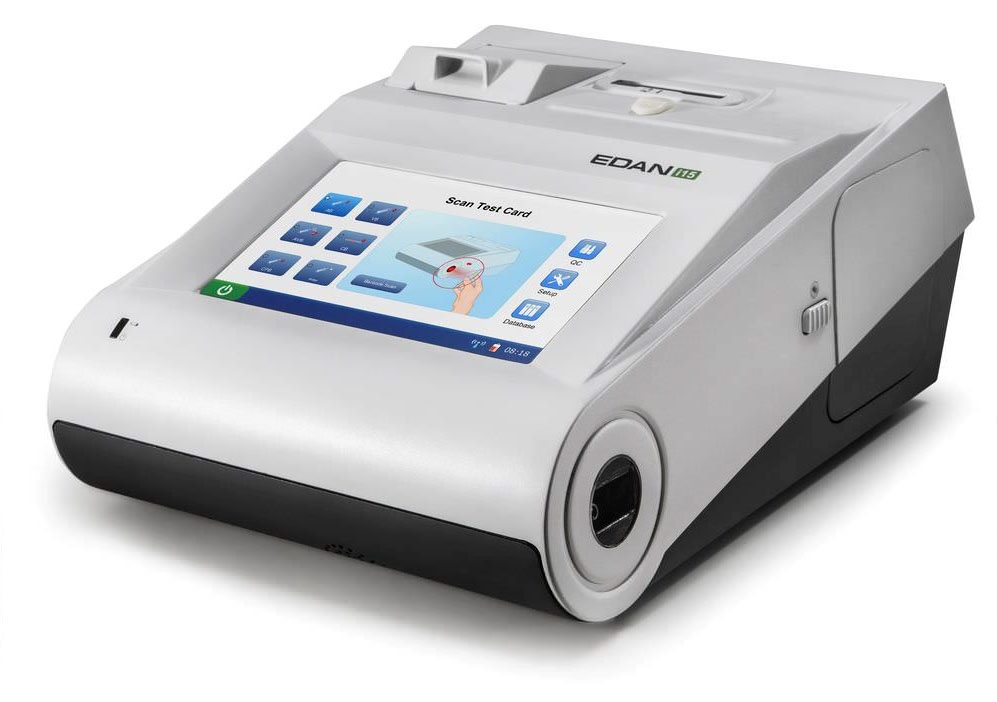Description
EDAN i15 Veterinary Blood Gas Analyzer POC
As a brand new POCT device specially designed for critical cares, i15Vet is portable, easy to use and performs flexible tests on a single disposable cartridge. i15Vet brings new era of blood gas and chemistry analysis, and it enables you to more quickly and effectively monitor and manage your patients.
Features:
Small size and light weight with build-in rechargeable battery
3-step operation procedure to increase efficiency
Complete maintenance free
Standby at any time without reagent consumption
Auto sample aspiration and calibration to ensure accuracy and reliability
Seamless integration with LIS/HIS through wired and wireless networking
10,000 patient data storage and USB data transfer
Friendly user interface with color LCD touch screen and traffic light indicator
Build-in multimedia tutorials
Flexible tests combination on single cartridge
Long cartridge storage life at room temperature, ready to use at any time
Variety of test Cartridges
BG3: pH, pCO2, pO2
BC4: Na, K, Cl, Ca, Hct
BG4: pH, pCO2, pO2, Lac
BG8: pH, pCO2, pO2, Na, K, Cl, Ca, Hct (standard supply)
BG9: pH, pCO2, pO2, Na, K, Cl, Ca, Glu, Hct
BG10: pH, pCO2, pO2 Na, K, Cl, Ca, Glu, Lac, Hct
Future menu in development
BUN/Urea & Creatinine
Coagulation test (ACT, APTT, PT)
Immunoassay panels
Calculated values- HCO3-act, HCO3-std, BE(ecf), BE(B), BB(B), ctCO2, sO2(est), Ca++(7.4), AnGap, tHb(est), pO2(A-a), pO2(a/A), RI, pO2/FIO2, cH+(T), pH(T), pCO2(T), pO2(T), pO2(A-a)(T), pO2(a/A)(T), RI(T), pO2(T)/FIO2, Ca++(7.4)
EDAN i15 Veterinary Blood Gas Analyzer POC – Theory
The system utilizes potentiometry and amperometry to determine the concentrations of pH, blood gases (pCO2, pO2), electrolytes (Na+, K+, Ca++, Cl‐) and metabolites (Glu and Lac), and utilizes conductivity to determine the concentration of Hct. Many parameters can also be calculated suchas cH+, HCO3–act, HCO3–std, BE(ecf), BE(B), BB(B), and so on.
Measurement Method
Methods
Measurements are performed on undiluted specimens. Undiluted methods are also called direct methods, whereas methods that dilute the sample are called indirect methods.
For electrolytes, direct methods measure the free ion concentration of analyte (apparent or free ion activity) per unit volume of plasma water, and indirect methods measure the concentration of analyte per unit volume of plasma. It is known that the direct method gives the clinically significant result for electrolytes. When there is disagreement between the methods, such as when the patient has abnormal total protein or lipid levels, it results from interference on the indirect method. At normal levels of protein and lipids the systematic offset between methods is often corrected for in commercial direct measuring instruments so that the normal ranges for all instruments are in agreement. Sensors have been calibrated in the manufacture so that normal ranges are in agreement with indirect reference methods at normal levels of total protein and lipids.
Direct measurement of hematocrit by the conductometric technique gives a result related to the non-conducting excluded volume fraction of the sample. Red blood cell volume is the predominant component of the nonconducting volume, but proteins, lipids, and white blood cells also contribute. Elevated hematocrit readings are expected at abnormally elevated levels of these components. Decreased hematocrit readings are expected at abnormally low levels of protein, such as found in hemodiluted samples taken from cardiopulmonary bypass. Osmotic imbalance causes a discrepancy between direct (conductometric, spun) and indirect (Coulter) measurements because of variation in the meancell volume.
Additional information
| Weight | 10 kg |
|---|
Recommended products
Nothing found.


